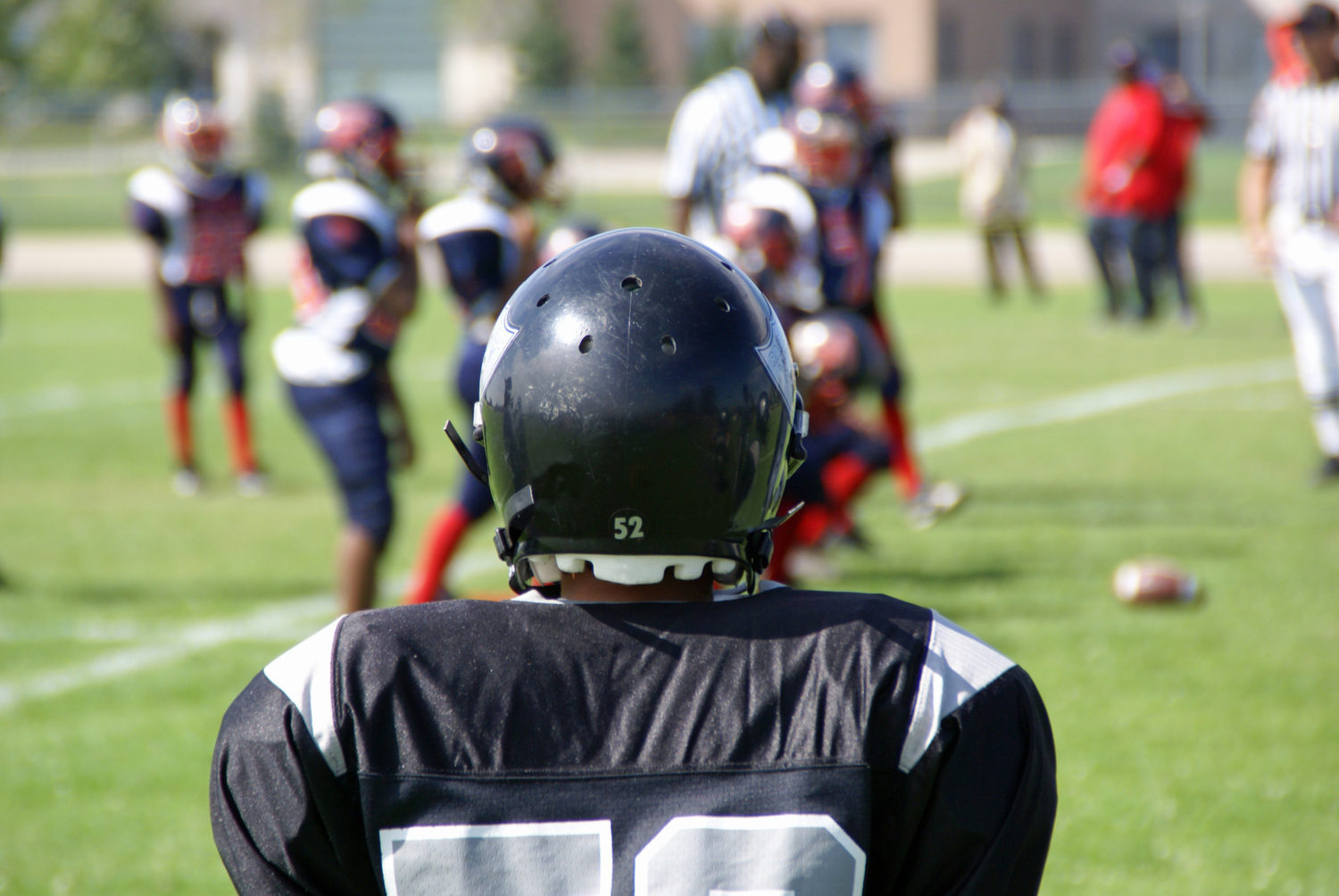
By John R. Mishock, PT, DPT, DC
Approximately 3,500,000 young athletes (7-18 years-of-age) play organized tackle football in the United States. Recently there has been much scrutiny placed on youth tackle football due to the recent research on the potential long term effects of repeated head contacts leading to the development of Chronic Traumatic Encephalopathy (CTE). This degenerative brain disorder develops with repeated head contacts and can lead to symptoms such as; difficulty thinking (cognitive impairment), memory loss, aggression, speech and language difficulties, body movement impairments, impulsive behavior, depression, substance abuse, suicidal thoughts or behavior. Look no further than former New England Patriots star football player Aaron Hernandez who committed suicide in 2017 in prison while serving a murder conviction. Upon brain autopsy it was determined that Hernandez (just 27 years-old) had stage 3 CTE (out of 4 stages) with only one diagnose concussion during his professional football career.
Research has demonstrated that repetitive subconcussive forces (no symptoms of concussion) can lead to brain injury and the development of CTE. A concussion can happen in most sports and other recreational activities, however, with youth football it can be the low level repeated head contacts that accumulate over time. There have been a few studies looking at the number of head contacts during a season in youth tackle football players. The researchers placed movement impact sensors in the helmets to measure the force of contact and the number of head contacts throughout a season (practice and games) in youth players. The studies showed a significant number of contacts on average; 161 head contacts (8 year-olds) and 168 head contacts (9-12 year-olds). (J Neurosurg Pediatr, 2017) (Clin J Sport Med 2014) If that 8 year-old football player ends up playing in high school, college, or even pro, they would have sustained 1,000s upon 1,000s of subconcussive head contacts over their career. It is the large number cumulative head contacts that are troubling medical professionals and former National Football League (NFL) players.
Many former NFL players are speaking out against tackle football for youth athletes. Hall of Fame football players Harry Carson (New York Giants) and Nick Buoniconti (Miami Dolphins) are urging parents to not allow their children play tackle football until they are at least 14 years of age. The group is instead endorsing flag football (Flag Football Under 14).
Starting tackle football after age 14 makes overwhelming scientific sense in light of a new research article showing a 2xs greater risk of developing CTE in American football players who started tackle football before age 12. (Transl Psychiatry, 2017)
Another study examined the brains (post-mortem) of teenage athletes who had sustained mild head impacts over time but passed away through other causes. They found physiological changes in the brain that were the beginnings of CTE. They concluded that closed-head impacts, independent of concussive signs, can induce traumatic brain injury as well as early pathologies and functional sequelae associated with CTE.

In a recent animal study, researchers produced repeated mild head contacts (subconcussive forces) to the animal subjects over 24 months. They observed memory loss, disorientation, balance and movement coordination deficits. Upon brain autopsy they showed clears signs of the beginnings of CTE. (Brain, 2018)
Football is a great game; however, recent research on the development of brain injury may cause youth football organizations and government legislative bodies to rethink the approach and timing of tackle football. Keep in mind that many college football teams and the Canadian Football League forbid tackling of each other in there team practices. Those football players have developed adult brains. Contrast that to the developing brains of our youth that our most vulnerable to these repeated head impacts caused by tackle football.
We can help!
If you have pain or limited function limiting you from doing the activities you enjoy, give Mishock Physical Therapy a call for a Free Phone Consultation at (610)327-2600 or email your questions to mishockpt@comcast.net. Visit our website to learn more about our treatment philosophy, our physical therapy staff, and our six convenient locations in Gilbertsville, Skippack, Phoenixville, Barto, Limerick, and Stowe at www.mishock.wpengine.com.
Dr. Mishock is one of only a few clinicians with doctorate level degrees in both physical therapy and chiropractic in the state of Pennsylvania.
